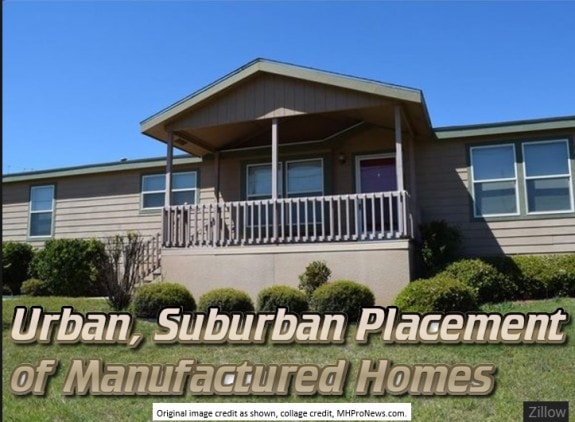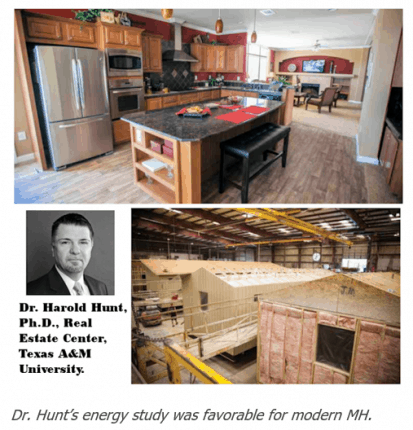
“In our industry, the biggest problem we have is that when people think of a mobile home, they think of their great-grandma’s trailer,” Texas Manufactured Home Association Executive Director DJ Pendleton told the local newspaper. “People hear ‘mobile home’ and automatically go to the worst image in their brain. Really, it’s an incredibly regulated product that has to go through federal building codes as well as state and local regulations.”
“You can get a lot more house for the same amount of money,” said Texas A&M University Real Estate Center research economist, Harold Hunt.
Hunt has previously shared articles with MHLivingNews.com. He knows and sees the value – and need for – the use of more manufactured homes, today.
Hunt said, “And with a lot of them today, it’s hard to distinguish the inside from any other house. We’re talking about a lot more affordable housing, which is a big issue in the state right now.”

Amarillo Compared to Other Cities
“Potter-Randall Appraisal District encompasses 4,499 manufactured homes, well above similar districts surrounding Columbus, Ga. (1,424), Rochester, Minn. (1,777), Greeley, Colo. (2,238) and Lubbock (3,151),” per the Globe News.

“Sure, we need to continue efforts to grow our presence in the more densely populated urban centers where population growth and housing demand drive large market potential,” Pendleton told MHProNews, “But bread and butter rural modest and lower income small Texas cities and towns must stay open for business when it comes to manufactured housing.”
The Globe News explained how manufactured home owner, Tammy Deterts’ property, about an acre of land north of the Amarillo city limits, has served her, her son, daughter-in-law and grandson.
“Deterts picked out nearly everything on the interior of her 16-by-80-foot home, including the flooring, drapes and carpet — all of which would have been unaffordable in a built-to-suit stationary house,” the Globe News reported
“When we want to crank up our music, we can,” Deterts’ said. “(If) we want to have a big get-together with family, we’ve got the space to do that. In apartments, you don’t get that.”
Pendleton told MHProNews that overall, the Globe News report was fair and balanced, though it had a few imprecise points in terminology.
“More open-minded cities, like Amarillo, prove the point that when given even a relatively fair playing field to compete, manufactured housing can thrive,” said the TMHA’s executive director. “The issue is keeping and fighting to keep or even regain those level playing fields in similar cities, because it is hard to get out there and show really what all you can do and offer if you aren’t allowed off the bench.”

In an Op-Ed on a related issue, neighboring Arkansas Executive Director JD Harper thanked Rev. Donald Tye Jr. and MHProNews for underscoring the need to push enhanced preemption with HUD.
Doing so, as Pendleton, Harper and other industry professionals know, would grow sales and ease the housing crunch in numerous markets.
This Globe News story,
- or HUD’s PD&R study linked here,
- or the experience of rising values for manufactured homes in the Pacific Northwest,
are all among the examples that demonstrate why the misconceptions are just that – a lack of understanding of the facts about HUD Code manufactured homes today.
Will more cities take Amarillo’s lead and increase the availability of manufactured housing to solve the housing crisis? # # (News, analysis.)
(Image credits are as shown above, and when provided by third parties, are shared under fair use guidelines.)


























